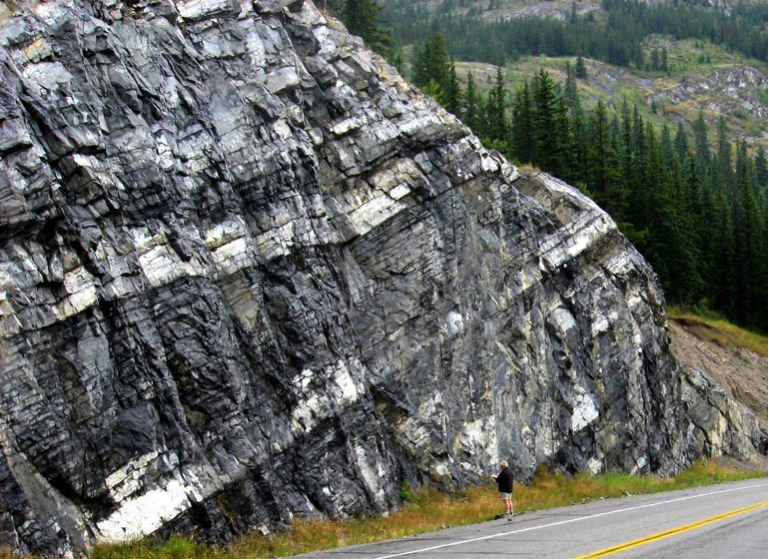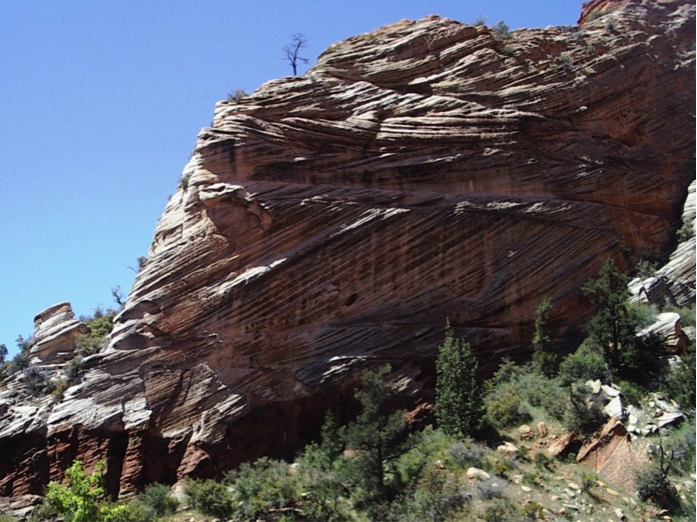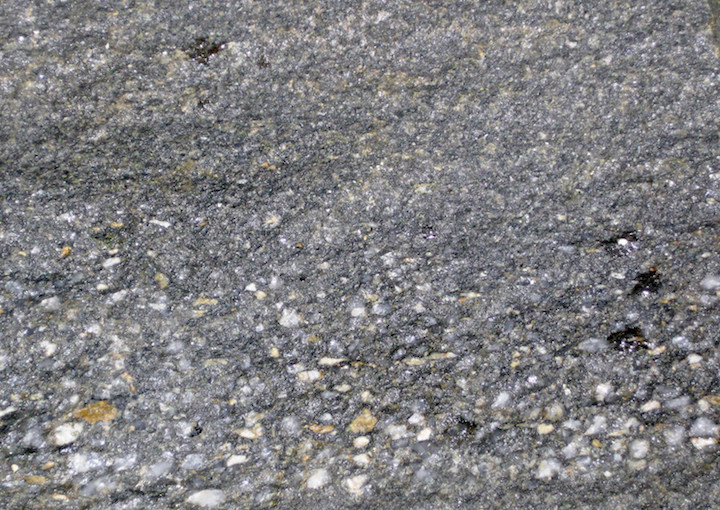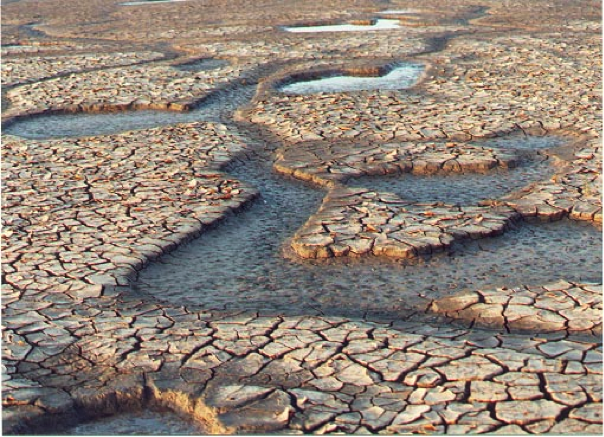9.5 Sedimentary Structures and Fossils
Through careful observation over the past few centuries, geologists have discovered that the accumulation of sediments and sedimentary rocks takes place according to some important geological principles that can be summarized as follows:
- The principle of original horizontality states that sediments accumulate in essentially horizontal layers. The implication is that tilted sedimentary layers observed today must have been subjected to tectonic forces that tilted them.
- The principle of superposition states that sedimentary layers are deposited in sequence, and that unless the entire sequence has been turned over by tectonic processes, the layers at the bottom are older than those at the top.
- The principle of inclusions states that any rock fragments in a sedimentary layer must be older than the layer that contains them. For example, the cobbles in a conglomerate must have been formed before the conglomerate.
- The principle of faunal succession states that there is a well-defined order in which organisms have evolved through geological time, and therefore the identification of specific fossils in a rock can be used to determine its age.
These and other principles are discussed in more detail in Chapter 19.
In addition to these principles that apply to all sedimentary rocks, a number of other important characteristics of sedimentary processes lead to the development of distinctive sedimentary features in specific sedimentary environments. By understanding the origins of these features, we can make some very useful inferences about the processes and depositional environment that ultimately resulted in the rocks that we are studying.
Bedding refers to sedimentary layers that can be distinguished from one another on the basis of characteristics such as texture, composition, colour, or weathering characteristics (Figure 9.22). They may also be similar layers separated by partings, narrow regions marking weaker surfaces where erosion is enhanced. Bedding is an indication of changes in depositional processes that may be related to seasonal differences, changes in climate, changes in locations of rivers or deltas, or tectonic changes. Bedding can form in almost any depositional environment.

Cross-bedding is bedding that contains angled layers. It forms when sediments are deposited by flowing water or wind (Figure 9.23). Cross-beds in streams tend to be on the scale of cm to tens of cm, while those in aeolian (wind deposited) sediments can be on the scale of metres.

Cross-beds form as sediments are deposited on the leading edge of an advancing ripple or dune. Each layer is related to a different ripple that advances in the flow direction, and is partially eroded by the following ripple (Figure 9.23). Cross-bedding is a very important sedimentary structure to recognize because it can provide information on the direction of current flows and, when analyzed in detail, on other features like the rate of flow and the amount of sediment available.

Ripples, which are associated with the formation of cross-bedding under unidirectional flow, may be preserved on the surfaces of sedimentary beds. Ripples formed in flowing water can also help to determine flow direction because they tend to have their steepest surface facing down-flow. Ripples can also form from back-and-forth flows, like at a beach, but these do not leave cross-beds, and are symmetrical, without one side steeper than the other.
Graded bedding is characterized by a change in grain size from bottom to top within a single bed. “Normal” graded beds are coarse at the bottom and become finer toward the top (Figure 9.25), a product of deposition from a slowing current. Some graded beds are reversed (coarser at the top), and this normally results from deposition by a fast-moving debris flow. Most graded beds form in a submarine fan environment, where sediment-rich flows descend periodically from a shallow marine shelf down a slope and onto the deeper sea floor.

In a stream environment, boulders, cobbles, and pebbles can become imbricated, meaning that they are generally tilted in the same direction. Clasts in streams tend to tilt with their upper ends pointing downstream, because this is the most stable position with respect to the stream flow (Figure 9.26).

Mud cracks form when a shallow body of water (e.g., a tidal flat or pond), into which muddy sediments have been deposited, dries up and cracks (Figure 9.27). This happens because the clay in the upper mud layers shrinks upon drying.

The various structures described above are critical to understanding and interpreting the formation of sedimentary rocks. In addition to these structures, geologists also look very closely at sedimentary grains to determine their mineralogy or lithology (in order to make inferences about the type of source rock and the weathering processes), their degree of rounding, their sizes, and the extent to which they have been sorted by transportation and depositional processes.
A Note About Fossils
Fossils are not covered in detail in this book, but they are extremely important for understanding sedimentary rocks. Fossils can be used to date sedimentary rocks, but just as importantly, they tell us a great deal about the depositional environment of the sediments and the climate at the time: they can help to differentiate marine, aquatic, and terrestrial environments; estimate the depth of the water; detect the existence of currents; and estimate average temperature and precipitation.
Exercise: Interpreting Past Environments
Sedimentary rocks can tell us a great deal about the environmental conditions that existed during the time of their formation. For each of the following rocks, make some inferences about the following:
- source rock
- weathering
- sediment transportation (medium of transport, transport distance)
- depositional conditions
Quartz sandstone: no feldspar, well-sorted and well-rounded quartz grains, cross-bedded
Feldspathic sandstone and mudstone: feldspar, volcanic fragments, angular grains, repetitive graded bedding from sandstone upwards to mudstone
Conglomerate: well-rounded pebbles and cobbles of granite and basalt; imbrication
Breccia: poorly sorted, angular limestone fragments; orange-red matrix

